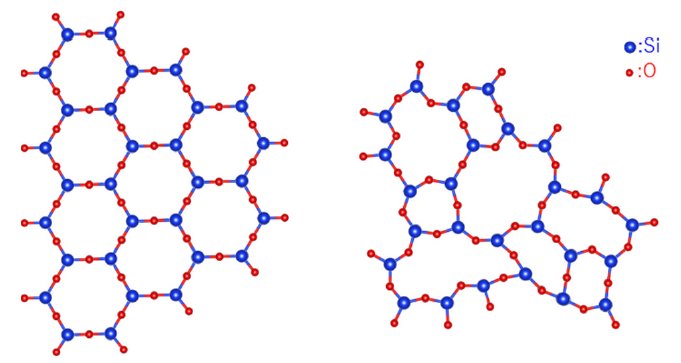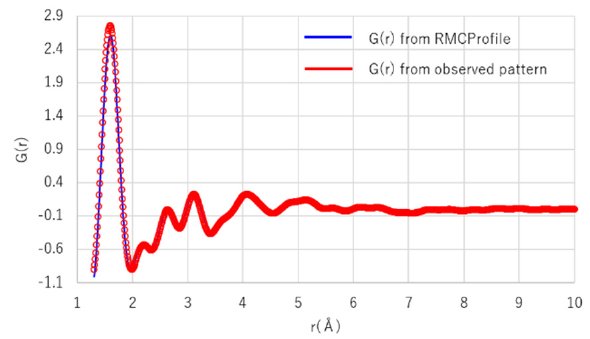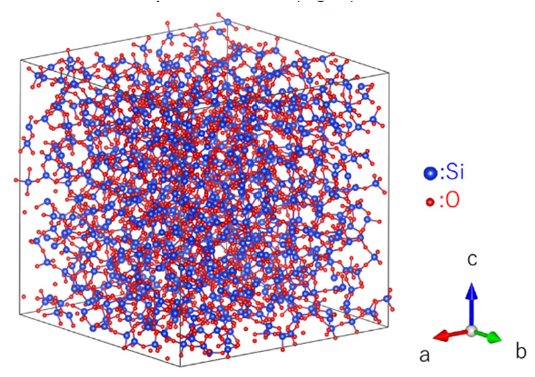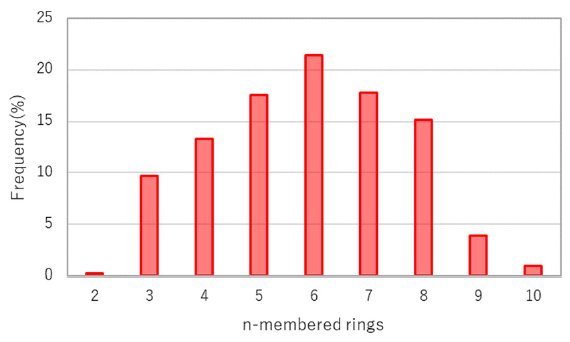Application Note B-XRD1112
Introduction
PDF analysis is a method used to derive atomic distances and atomic coordination numbers from X-ray diffuse scattering patterns. Furthermore, Reverse Monte Carlo (RMC) simulation can determine the amorphous structure from the observed PDF profile. The RMC simulation is a method to construct a structure model by fitting the simulated PDF profile to the observed PDF profile by randomly moving atoms in a cell of chosen size.
Measurements and results
W.H. Zachariasen first proposed that amorphous silica has a random network structure (1). Crystalline silica is composed only of 6-membered rings of Si atoms, while amorphous silica is composed of n-membered rings as shown in Figure 1. To determine the network structure, RMC simulation was performed using RMCProfile software (2). The simulation was started with 1500 Si and 1500 O atoms generated in a 35 ų cell, taking into account the atomic density. The simulation results showed good agreement between the observed and simulated PDF patterns (Figure 2). The network structure was obtained from the RMC simulation (Figure 3) and the population of n-membered rings was derived using the ISAACS software (3). As shown in Figure 4, 6-membered rings had the highest frequency, and there were n-membered rings that indicate that amorphous silica has the proposed network structure (4).

Figure 1: The structures of crystalline silica (left) and amorphous silica (right)

Figure 2: Observed and simulated PDF patterns

Figure 3: Amorphous silica structure obtained from RMC

Figure 4: n-membered ring frequency of Si-Si
References:
(1) R. L. McGreevy et al.: Molecular Simulation, 1 (1988) 359-367.
(2) W. H. Zachariasen: J.Am.Chem. Soc., 54 (1932) 3841-3851.
(3) S.Le Roux et al.: J.Appl.Cryst., 43 (2010) 181-185.
(4) S.Kohara et al.: Proc. Nat.Acad.Sci., 108 (2011) 14780-14785.

